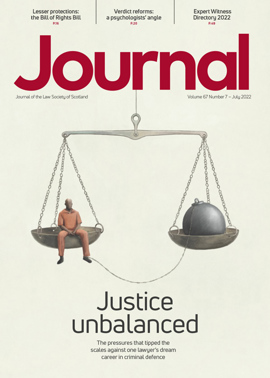Are you resilient to a ransomware attack?
We’ve seen too many partners having to endure it. The awful realisation that digital criminals are inside your firm, stealing and encrypting confidential personal and business information and using it to blackmail you.
You know for sure that your business is going to be severely damaged, and you’re going to have to explain yourself to the regulators, your clients and affected third parties.
To help you avoid this, here are our top 10 areas that law firms need to address to stop ransomware.
1. Anti-virus (AV) software
AV is the software application that is designed to stop malicious software getting a foothold on your devices and prevent bad actors (hackers) taking control of your systems.
In the end-to-end journey of a successful ransomware attack, AV will have several opportunities to halt progress. Cybercriminals will attempt to switch it off as early in the journey as they can. As a minimum, make sure it is centrally controlled, configured by a security specialist, kept up to date and on every device.
2. Email security filters
Email platforms have filters that check incoming emails for malicious software, dodgy links and whether they came from an untrusted origin.
One of the attackers’ favourite ways into a business is via an email. Setting your platform up correctly can make sure that employees are protected from this route in.
3. Web browsing controls
These controls are designed to stop or warn users they are about to visit a dangerous or fraudulent website.
To get around the AV software, fraudsters will often take unwitting staff to fraudulent websites. This risk can be minimised by correctly setting the controls in the browser, the AV and the operating system.
4. Security patching
Software providers like Microsoft or Google (Chrome) issue regular software updates that patch (fix) known vulnerabilities.
Cybercriminals will use bugs in software to compromise your defences and this is often used in ransomware attacks to get control. The simple discipline of updating these patches is probably the most neglected.
5. Least privilege
Every user on your system is assigned privileges that define what they can control, run, and amend.
Ransomware attackers take over users’ accounts, and the more privileges that a user has, the more damage the attacker can do. So an approach of least privilege should be followed.
6. Remote authentication
When working at a non-work location (e.g. at home), how do you tell business systems who you are, and how do they authenticate that?
Username and password are no longer good enough protection for remote connection. Adding another method of authentication would stop a significant proportion of ransomware attacks.
7. Test and scan externally facing assets
Tests and scans of firewalls, domain addresses, login pages and IP addresses will check for vulnerabilities and gaps in your security defences.
You may not be scanning these, but the criminals are! So you need to find the open ports and poor configuration before they do.
8. Review access management
This relates to the documents, files, and folders that your system allows individuals to access.
There is a generic setting of “Everyone” in many systems. This means that everyone connected to the system can get to the documents; you do not even have to be authenticated. Access to documents should be defined by role.
9. Alerting and incident response
The controls and administration of your IT systems have alerts that warn you something is not right.
An incident response plan is a rehearsed set of steps that ensure businesses respond effectively to a cyber incident.
If you prepare these two things correctly you will have a chance of stopping a ransom attack in its tracks.
10. Backup
This is the process by which your business takes a copy of the systems, applications, and documents for use in an emergency.
This is rarely configured correctly, which means that scarily few backups survive a ransomware attack, with everything ending up encrypted. Get yourself confident that yours would survive.
There is of course more to do, but if you do this top 10 well, it will dramatically reduce your risk. If you do not understand any of the above, please contact us.
Perspectives
Features
Briefings
- Civil court: Issues on appeal
- Licensing: Minimum pricing – a genuine impact?
- Insolvency: How to admit joint creditor claims
- Tax: windfall and plastic packaging taxes raise stakes
- Immigration: Asylum system overhauled
- Scottish Solicitors' Discipline Tribunal: July 2022
- In-house: In with the stonework
- Property: Living with the Register of Overseas Entities
In practice
- OPG update: July 2022
- Public policy highlights: July 2022
- Gear up for the Scottish Legal Walks
- Disabled solicitor support group proposed
- Risk: Cybercrime – the hybrid worker prey
- Ask Ash: Piling it on
- TRS: time for a trusts trawl
- Know people, know business
- High street and hybrid
- Appreciation: Ian Leslie Shaw Balfour
- The Expert Witness Directory 2022
- Expert witness: case law update






